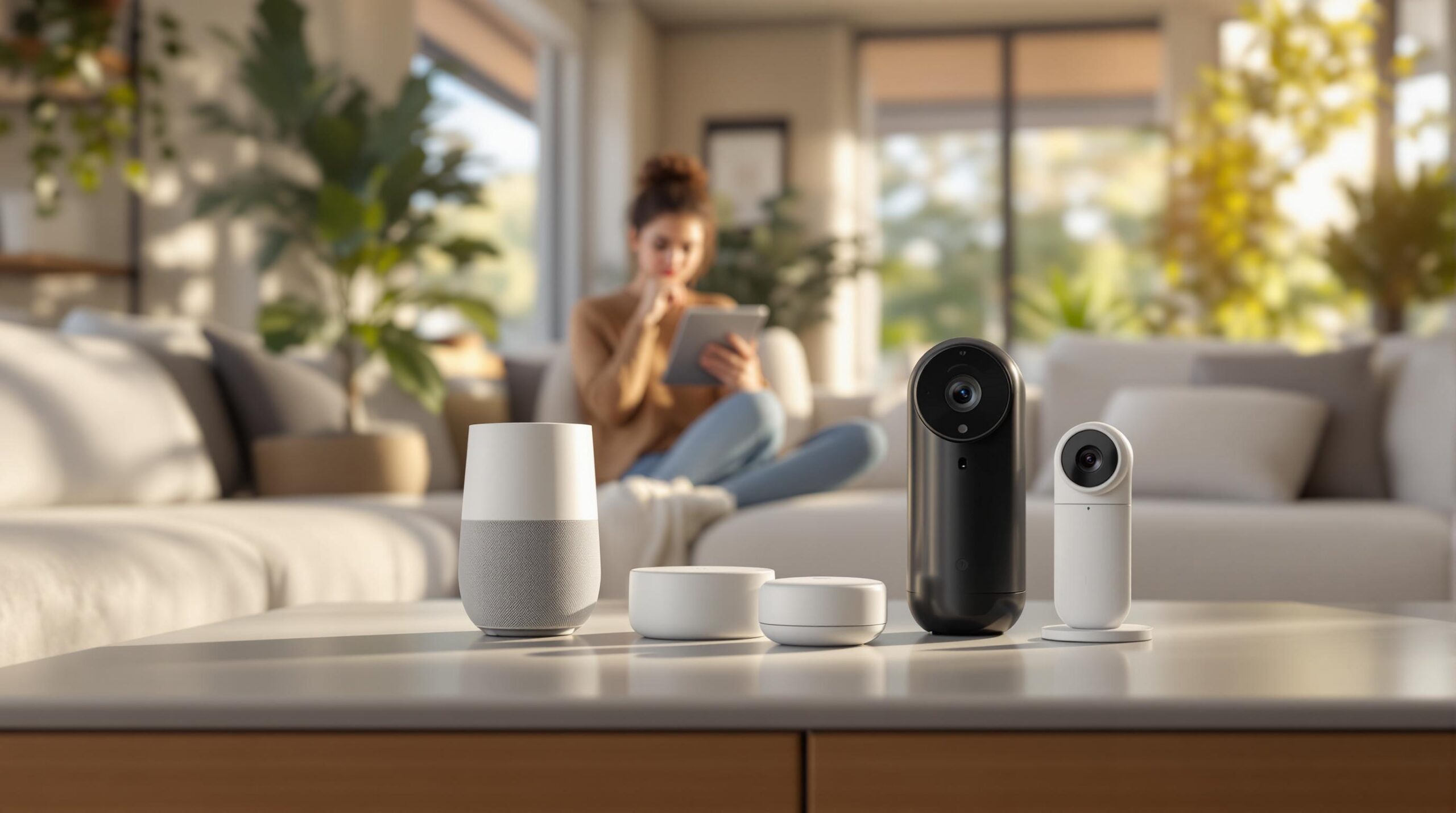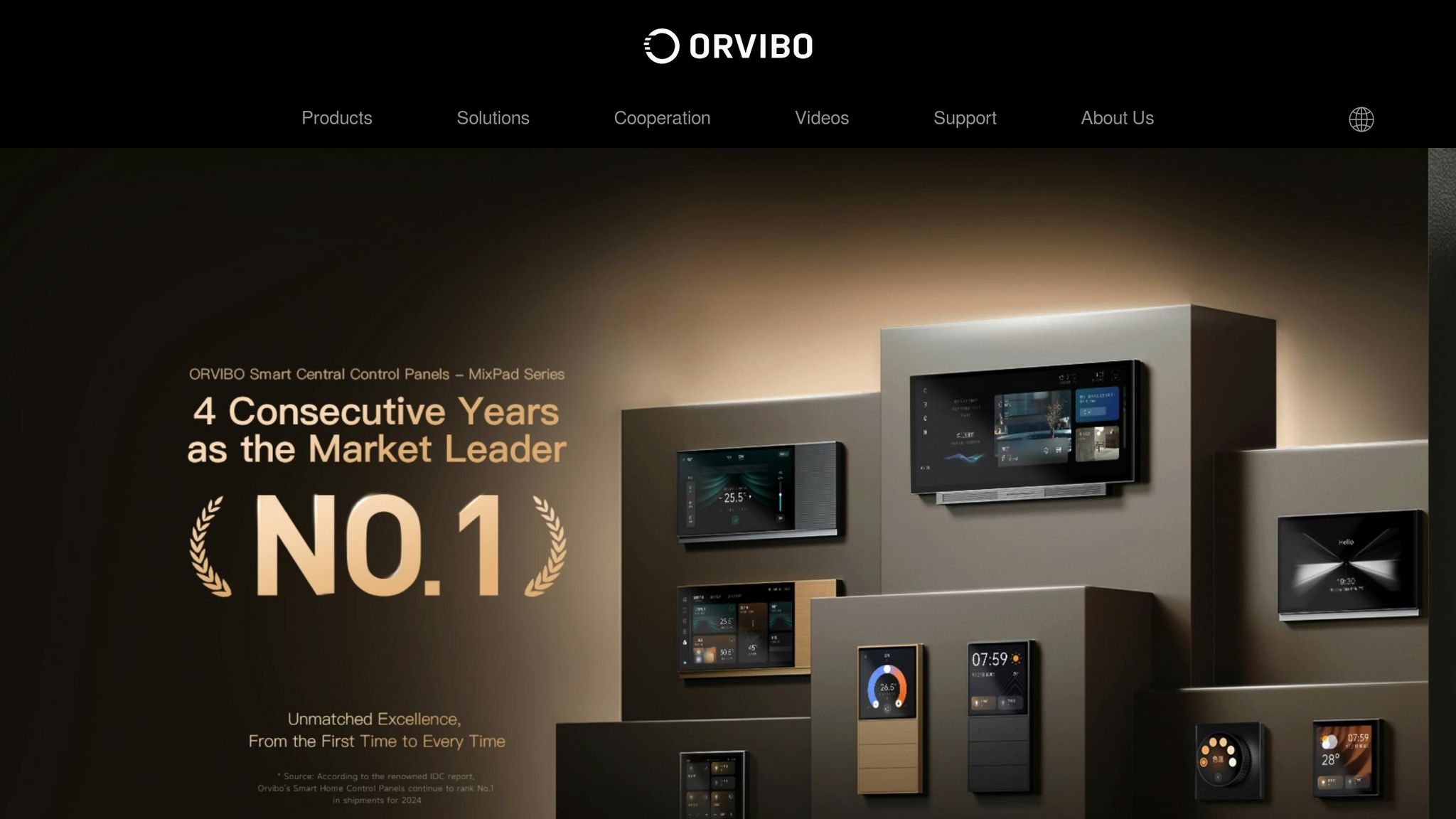
Smart home platforms make life easier, but they also bring serious privacy risks. Here’s what you need to know:
- Data Collection: Smart devices track your habits, location, and even record audio or video. This data is often shared with third parties.
- Security Weaknesses: Default passwords, unencrypted data, and delayed updates make these systems easy targets for hackers.
- Limited User Control: Many platforms don’t give you enough options to manage or secure your personal data.
- Integration Risks: Using devices from multiple brands increases vulnerabilities due to inconsistent security standards.
Quick Tips to Protect Your Privacy:
- Use strong, unique passwords and enable two-factor authentication.
- Regularly update device firmware and review network security settings.
- Set up separate networks for smart devices to limit access points.
- Educate your household about safe usage practices and monitor for unusual activity.
Smart home convenience comes with trade-offs, but staying proactive about security can help protect your privacy.
Privacy Issues in Smart Homes: What Devices Know About You
Main Privacy Issues in Smart Home Platforms
Off-the-shelf smart home platforms come with privacy challenges that extend beyond basic vulnerabilities, making it harder to manage personal data responsibly. Below are the primary concerns users face.
Data Collection and Sharing with Third Parties
Research into privacy policies reveals that manufacturers gather both direct and indirect data from users. Some of this data is shared with third parties, increasing the chances of identity exposure and behavioral tracking.
Security Weaknesses and Threats
Many pre-built smart home systems focus more on user convenience than strong security. Common issues include using default passwords, unencrypted data transfers, slow updates, and weak authentication. These flaws make devices more vulnerable to hacking and other security breaches.
Limited Control Over Personal Data
Smart home devices often require users to provide personal and account details, but the options for managing this data are minimal. This lack of control makes it harder for users to protect their privacy and ensure their information is stored securely.
Risks in Multi-Brand Device Integration
Using devices from multiple manufacturers adds another layer of security complexity. Gartner estimated that IoT devices would surpass 20 billion units, making it difficult to maintain consistent security standards. Developers need to implement stronger controls, universal protocols, better encryption, and frequent audits.
These privacy concerns highlight the importance of educating users about the risks involved in buying and using smart home technology.
sbb-itb-7af2948
Recent Smart Home Privacy Failures
The rise of smart home technology has brought convenience but also exposed users to serious security risks. High-profile cases highlight the dangers lurking in widely used platforms.
The Orvibo Database Leak
In July 2019, researchers discovered a major breach at Orvibo, a smart home device maker with around one million users globally. The company left its database open to the public, completely unprotected.
This exposed over 2 billion logs, including:
- Email addresses and passwords
- Precise location data
- Audio recordings from cameras
- Reset codes
The company used weak security measures, like unsalted MD5 password hashing, making it easy for attackers to exploit. Similar issues have surfaced with other platforms, like Ring.
Ring Security Camera Breaches
Amazon’s Ring cameras have faced serious privacy issues. In December 2020, numerous lawsuits were filed after unauthorized users accessed home security cameras.
These breaches were caused by:
- Weak passwords
- Insecure public Wi-Fi networks
- Software vulnerabilities left unpatched
- Reusing passwords across accounts
Hackers gained access to live video feeds, tracked household activity, and even used camera speakers to harass residents with threats and offensive language.
Smart Device Botnet Attacks
Beyond individual breaches, compromised smart devices are being used in large-scale network attacks. Alarmingly, 40% of all DDoS traffic now comes from hacked IoT devices.
One infamous example is the Mirai botnet, active from August 2016 to February 2017. By exploiting default passwords, it infected over 600,000 IoT devices and launched massive DDoS attacks, including a 623 Gbps assault on cybersecurity expert Brian Krebs’ blog.
More recently, Netscout reported a 353% increase in daily DDoS attacks, jumping from 144 in January 2023 to 611 in June. Over the past year, more than 800,000 new devices have been added to botnet networks.
"As IoT systems permeate modern society, botnet activities have grown exponentially. Because each device represents a potential entry point into the network, the risk and severity of attacks multiply as the interconnected ecosystem expands." – Devin Partida, IoT For All
These cases emphasize the pressing need for stronger security measures to safeguard smart home privacy.
How to Protect Smart Home Privacy
To tackle the risks discussed earlier, here are some practical solutions to safeguard your smart home privacy.
Advantages of Custom Smart Home Design
Custom setups allow users to:
- Choose which data is collected and stored.
- Decide whether data is processed locally or in the cloud.
- Use high-level encryption to secure information.
- Set up separate networks for sensitive devices.
Once you’ve tailored your smart home design, it’s time to implement strong security measures to make the most of these options.
Smart Home Security Steps
Securing your smart home involves a layered approach that addresses device security, network protection, and access control. Here’s a breakdown:
| Security Layer | Implementation Steps | Benefits |
|---|---|---|
| Device Security | Use unique passwords, enable 2FA, and update firmware | Blocks unauthorized access and fixes vulnerabilities |
| Network Protection | Apply WPA2 encryption, set up a guest network, and configure firewalls | Ensures secure communication channels |
| Access Management | Set user permissions, monitor devices, and log activity | Controls who can access devices and when |
Perform regular reviews of your devices and network to reinforce these security measures.
Regular Security Checks
Schedule monthly checks to keep your smart home secure:
1. Device Audit
Go through all connected devices, removing those you no longer use. Watch for unusual activity or unauthorized access attempts.
2. Network Analysis
Analyze network traffic with intrusion detection tools. Spot unusual data transfers or connections to unknown servers.
3. Permission Review
Check user and third-party access permissions. Revoke unnecessary access and update credentials as needed.
Technical safeguards are important, but educating everyone in the household also plays a key role.
Privacy Training Guidelines
Make sure all household members understand basic security practices by focusing on these areas:
- What devices collect: Explain what information is gathered and its purpose.
- Recognizing threats: Highlight common risks and how attacks happen.
- Safe habits: Teach password management and secure network use.
- Handling breaches: Outline steps to follow if security is compromised.
Pair these training efforts with regular firmware updates and encrypted data storage. Keep an eye on network traffic for anything unusual and maintain detailed logs of system activity and changes.
Conclusion: Creating Secure Smart Homes
Keeping your smart home safe involves a mix of strong technical defenses and informed user habits. The risks tied to off-the-shelf platforms highlight the importance of implementing security measures that go beyond the basics.
The challenges discussed here suggest the need to rethink how smart homes are designed. Custom solutions allow for better control over data, offering advanced encryption, secure network segmentation, and detailed access controls – features often missing in standard systems. Partnering with developers familiar with data compliance can help homeowners create systems that prioritize privacy and security.
Securing your smart home starts with focusing on three key areas:
| Security Pillar | Implementation | Impact |
|---|---|---|
| Device Protection | Strong passwords, two-factor authentication, regular updates | Blocks unauthorized access and addresses vulnerabilities |
| Network Security | WPA2 encryption, separate networks, traffic monitoring | Protects data in transit and isolates potential threats |
| User Management | Privacy education, access controls, activity logs | Preserves system integrity through informed user actions |
Real-world breaches show that maintaining a secure smart home requires ongoing effort. Regular system checks, timely firmware updates, and educating household members on security practices are essential. Starting with privacy and security as top priorities ensures that smart homes not only enhance convenience but also safeguard personal data.


